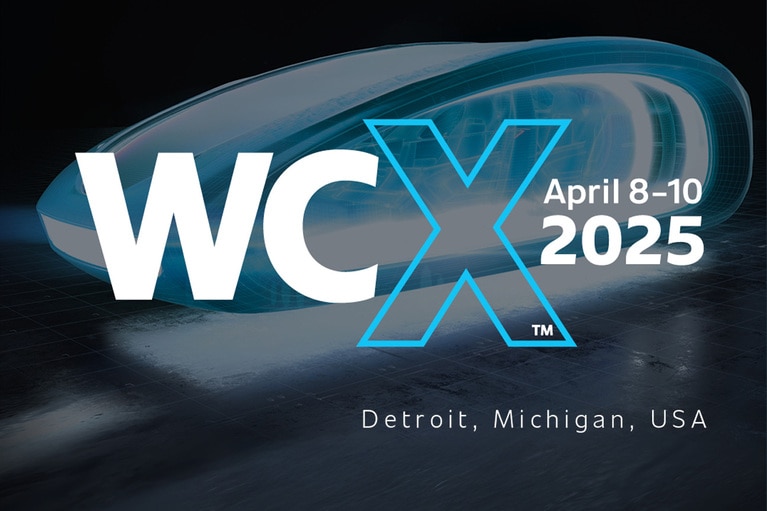High switching frequencies with soft-switching topologies are essential to achieving effective EMI filtering
Automotive electrification may be the most wide-ranging power challenge of our time. It is a global problem automotive OEMs face as they transition from internal combustion engines to battery-electric vehicles. R&D teams everywhere are exploring new approaches, trying to find better solutions to solve old and new power challenges.
In a standard electric vehicle (EV), a major design consideration is the power distribution and architecture. Naturally, these systems can be complicated, where a single vehicle relies on a battery (400V or 800V), providing high-voltage DC for low-voltage control electronics (12V), and a motor running on AC power.
Within this framework, DC-DC converters are necessary on the high-voltage bus to step down to the lower voltages, which power downstream loads. These converters rely on high-frequency switching in the hundreds of kilohertz. For this reason, they are a common source of electromagnetic interference (EMI) within the system. Counteracting their EMI contribution necessitates a dedicated EMI filter at the DC-DC converter input, which acts as a low-pass filter where only the noise beyond the cut-off frequency is attenuated.
Another integral component in the power architecture is the traction inverter, which is necessary to convert the battery’s DC output to AC to power the EV motor. The traction inverter creates unwanted high-voltage ripple in the system’s high-voltage bus during regeneration and propulsion. This ripple leads to major challenges in safety, reliability and lifetime for the DC-DC converter and its associated filter (Figure 1).
Figure 1: Ripple generated by the traction inverter impacts an EV’s high-voltage bus.
The detriments of ripple on the DC-DC converter
High-voltage ripple from traction inverter switching operation has deleterious effects on the DC-DC converter, its associated filter and even downstream electronics.
Looking at the filter, the voltage and current induced by the ripple cause self-heating
(PLOSS = I2rms • RESR) across the filter components. This unwanted heating leads to component degradation and failures, ultimately decreasing lifetime and system reliability. Such damage is exacerbated in undamped filter designs, where the ripple noise can occur at the resonant frequencies of the EMI filter (Figure 2). In these scenarios, overvoltage and overcurrent conditions can further damage the components, leading to malfunctions and sudden failures. If not managed properly, ripple noise can be a safety hazard in EVs.
Figure 2: The DC-DC converter input filter is designed to attenuate high-frequency noise and can have resonances that overlap with the traction inverter range.
In addition to causing damage to the EMI filter, the traction inverter ripple can have unwanted effects on the output of the DC-DC converter.
The closed-loop bandwidth of a converter is a measure of the unit’s ability to respond to fluctuations at certain frequencies. It can be thought of as a high-pass filter: if noise occurs at frequencies higher than the closed-loop bandwidth, the converter cannot filter it out.
The challenge is that the automotive DC-DC converter is generally designed with a closed-loop bandwidth of only a few kilohertz, but the traction inverter ripple occurs at much higher frequencies. At the same time, the EMI filter, which acts as a low-pass, has a cut-off frequency that is generally too high to attenuate the ripple noise.
The net result is that the closed-loop attenuation is not sufficient to diminish the noise that passes through the low-pass filter, and the noise becomes visible on the converter output. This can lead to damage and failure in the downstream low-voltage electronics, which are not rated to handle such high-voltage ripple.
Drawbacks of conventional solutions
While several conventional solutions to these issues are possible, each has tradeoffs.
Looking at the traction inverter, some options include increasing DC link capacitance, modifying drive profiles and implementing “no-fly zones” in the traction inverter operation.
Increasing DC link capacitance is not ideal because it requires larger capacitors, which take up more space and increase vehicle weight. In EVs, where space and weight are at a premium, this is not an appealing solution. The alternatives, “no-fly zones” and modified drive profiles, both result in increased control system complexity and reduced drive options.
A common solution at the filter level might be to redesign the filter so that it has a lower cut-off frequency. With a lower cut-off frequency, the filter can better attenuate the noise associated with traction inverter operation.
Figure 3: The output impedance of the filter directly affects the losses inside of the filter. In this example, the green waveform indicates a filter with higher output impedance (i.e., higher losses) up to 16kHz.
The problem here is that filters with low cut-off frequencies require large filter components (i.e., inductors and capacitors). These large components take up space and add weight to the system, which is undesirable in EV designs that seek to optimize power density. To further confound the issue, filters with greater output impedance (i.e., more filter attenuation) in the given frequency range result in greater power loss and self-heating across the filter (Figure 3).
Figure 4: Filters can be modified to minimize output impedances and losses, but this necessitates larger filter components. In this example, L1 and C4 become 20x and 50x larger respectively to minimize output impedance.
Solving ripple rejection with high-bandwidth power modules
A more effective solution is DC-DC converters that combine high switching frequencies with soft-switching topologies. Any number of high-density Vicor power modules can achieve ripple rejection. Vicor DCM™, BCM® and ZVS Regulator modules leverage high frequencies, which enable converters with much larger closed-loop bandwidths. These larger bandwidths translate directly into greater ripple rejection, as the system can better deal with noise in a wider frequency range, including the frequencies associated with traction inverter operation (Figure 5).
Figure 5: The frequency response from input to output (i.e., attenuation) of a high-bandwidth DC-DC converter. In this instance, the Vicor high-bandwidth converters attenuate frequencies up to 20kHz by at least 65dB.
As an added benefit, the high-frequency DC-DC converter operation allows for the design of EMI filters that are significantly smaller, saving space and weight. Since the filter no longer needs to accommodate lower frequencies, we can effectively shift the filter’s cut-off to a much higher frequency. This higher-frequency operation enables smaller filter components and, therefore, more power-dense systems.
It is also important to note that a higher switching frequency does not necessarily imply a worse EMI footprint. With a proper soft-switching topology and controller, noise magnitudes can be kept low and made easier to attenuate, since the EMI filter can be freed from parasitic parameters.
In this way, Vicor high-bandwidth power modules enable automotive systems with greater ripple rejection, higher reliability and greater power density (Figure 6).
Figure 6: Vicor DC-DC converters combine high bandwidths with soft switching topologies to solve challenges associated with ripple rejection in EVs more effectively than conventional solutions.
Improving automotive power delivery networks
Designing reliable, power-dense automotive systems is challenging due to the impact of high-voltage ripple from the traction inverter’s operation. Many attempt to solve the problem by sizing up the DC-DC converter filter’s components, resulting in systems that are larger and heavier. Given that system weight directly impacts range, automotive power delivery networks (PDNs) are resistant to using larger, heavier power components.
Instead, Vicor solves these issues with compact DC-DC power modules that boast a unique combination of high-bandwidth and soft-switching topologies. Vicor modular solutions lead to a more robust, reliable and power-dense PDN. Vicor power modules are thermally adept, highly efficient and simplify the design of power systems. More importantly, they are the most power-dense converters on the market and are flexible and scalable, making them a perfect solution for today’s dynamic xEVs.
Conclusion
Automotive PDNs have never undergone such an extreme change in such a short period of time. As OEMs curtail investment in internal combustion engines, R&D teams are presented with a myriad of power electronics challenges, further complicated by the transition to a 48V bus. Ripple rejection is among the more complicated power challenges when working within a confined footprint. Fortunately, the family of compact Vicor power modules (DC-DC converters) with high frequency and soft-switching topologies is the perfect solution for today’s demanding EV power electronics challenges.













